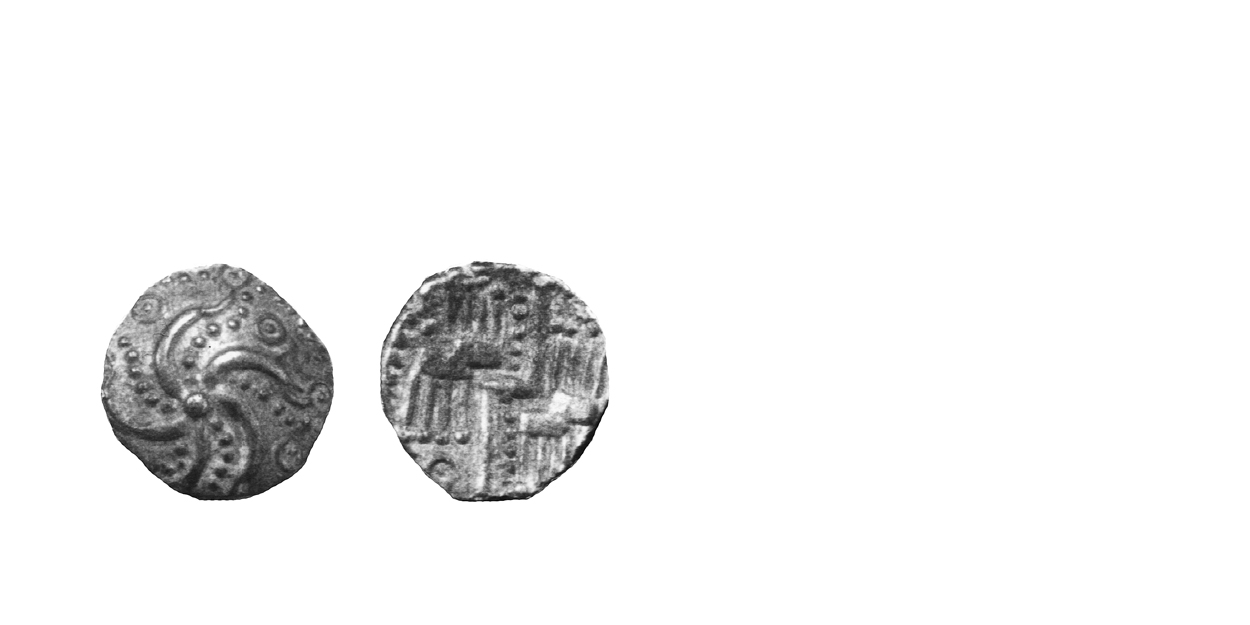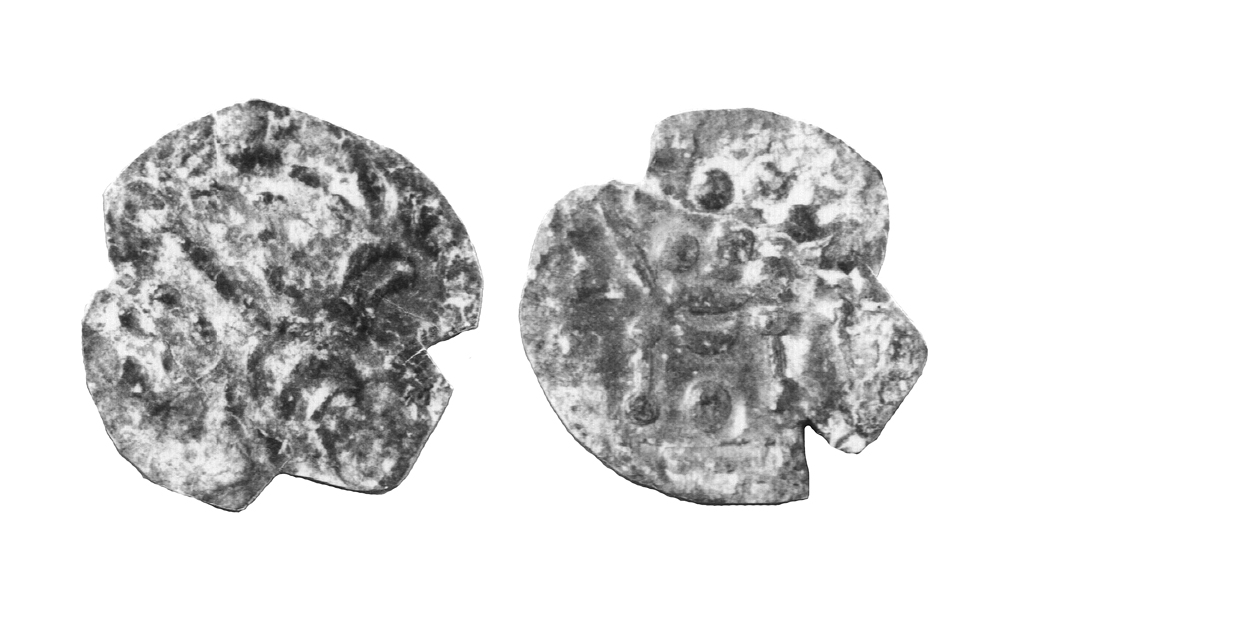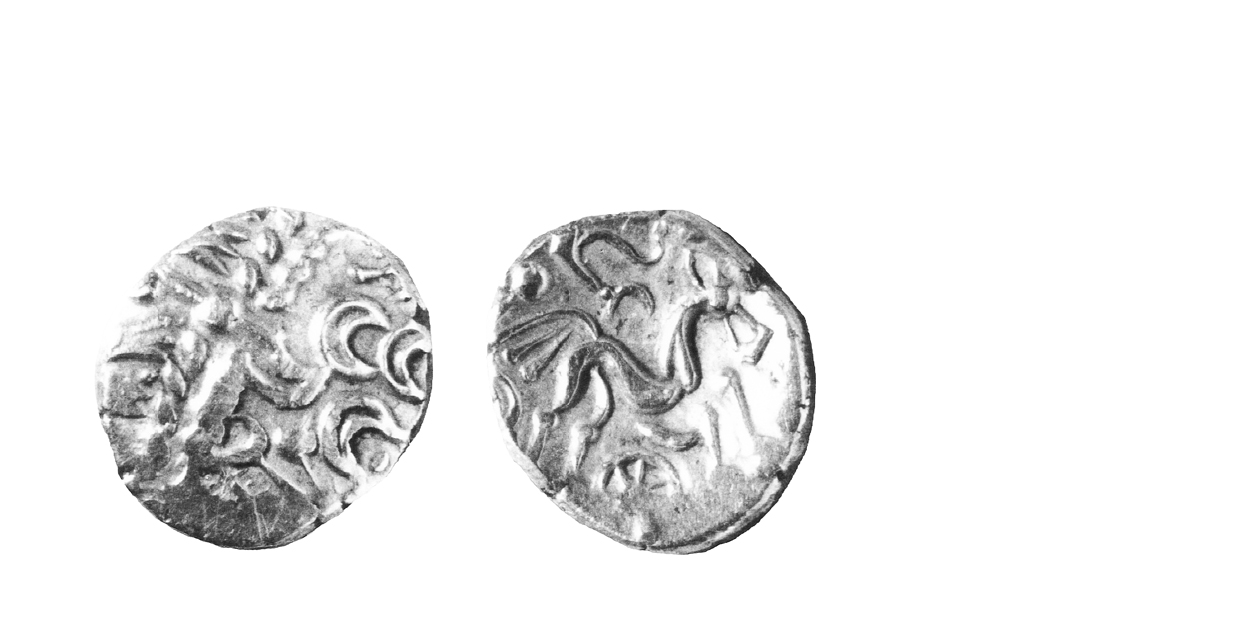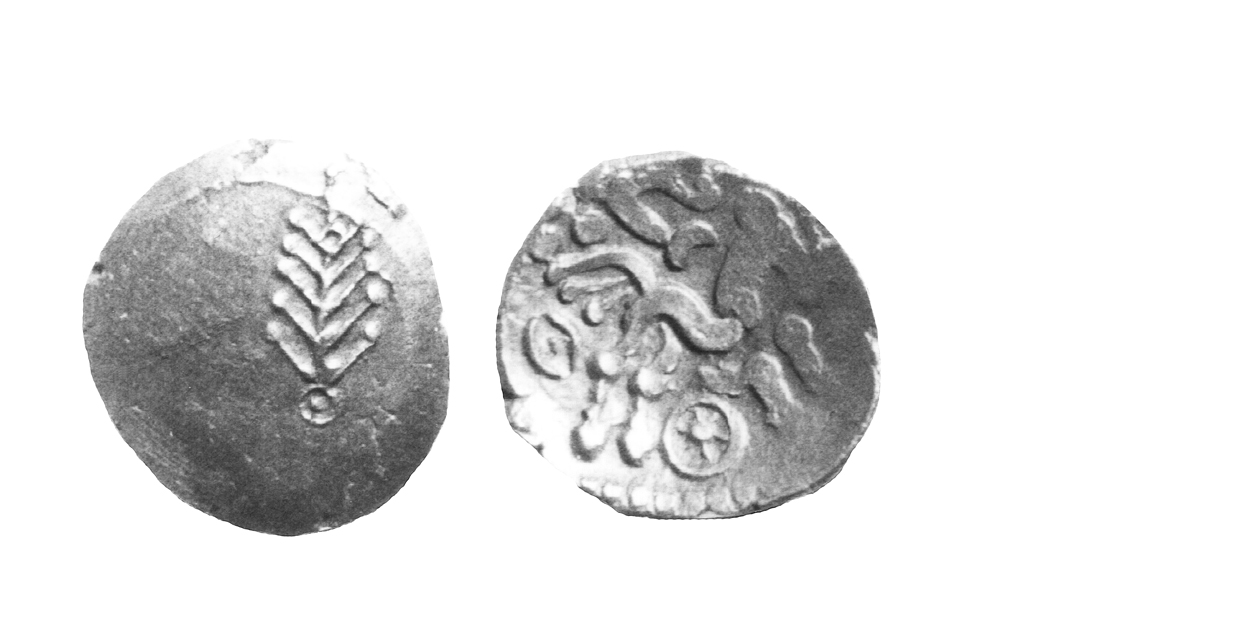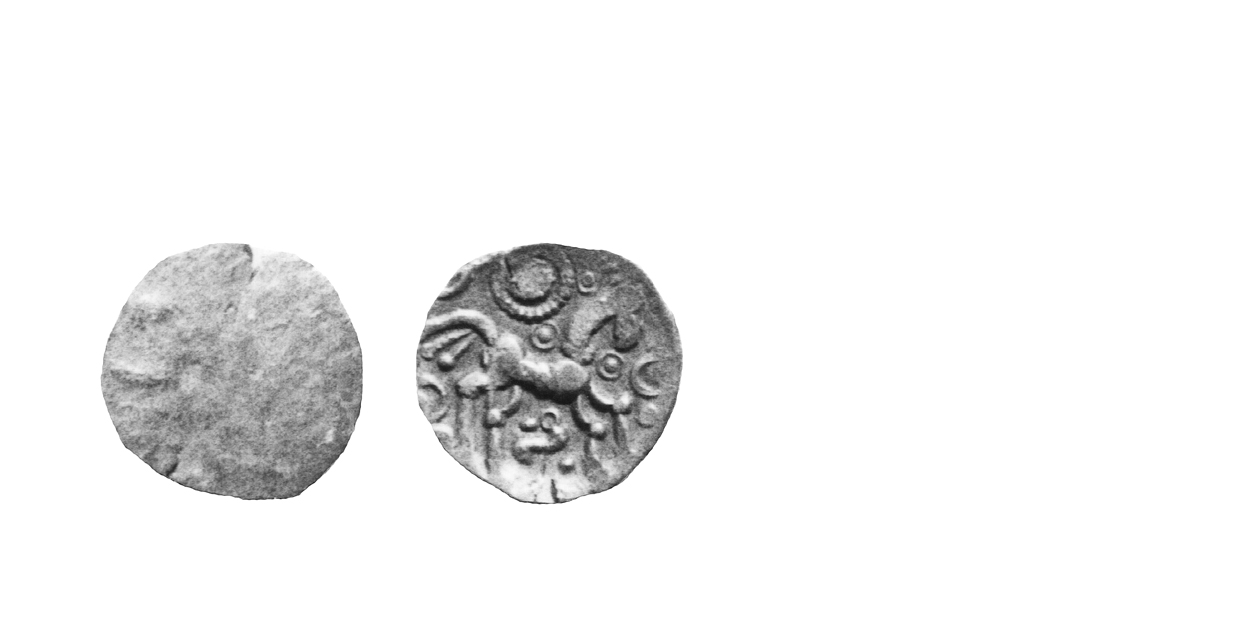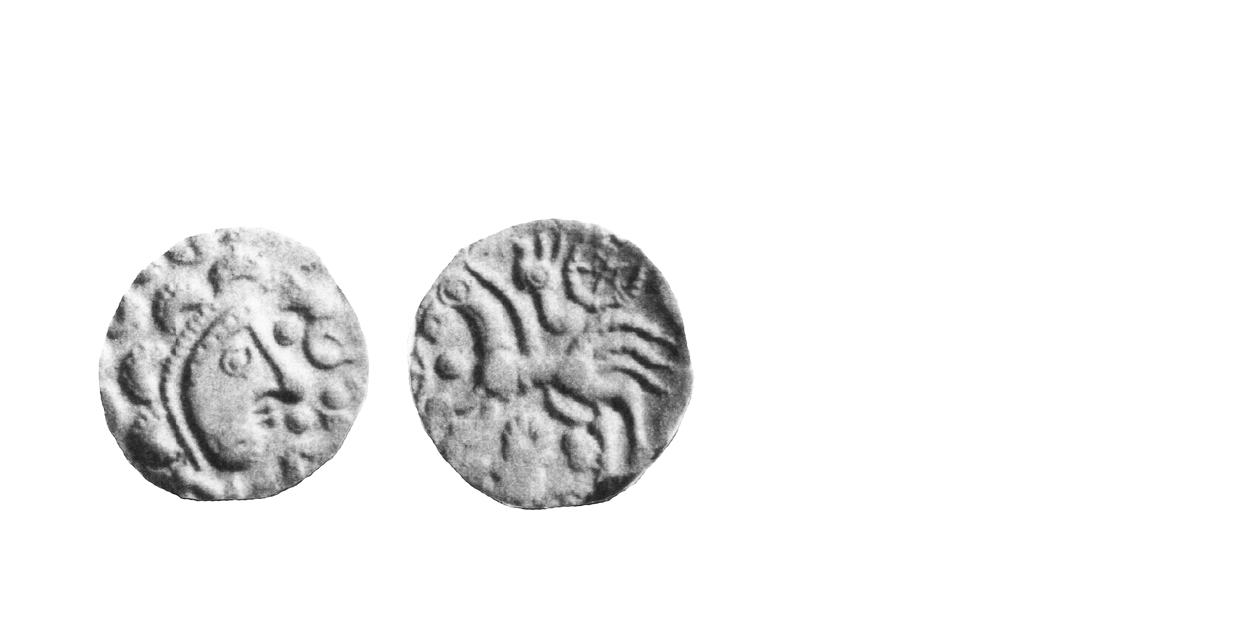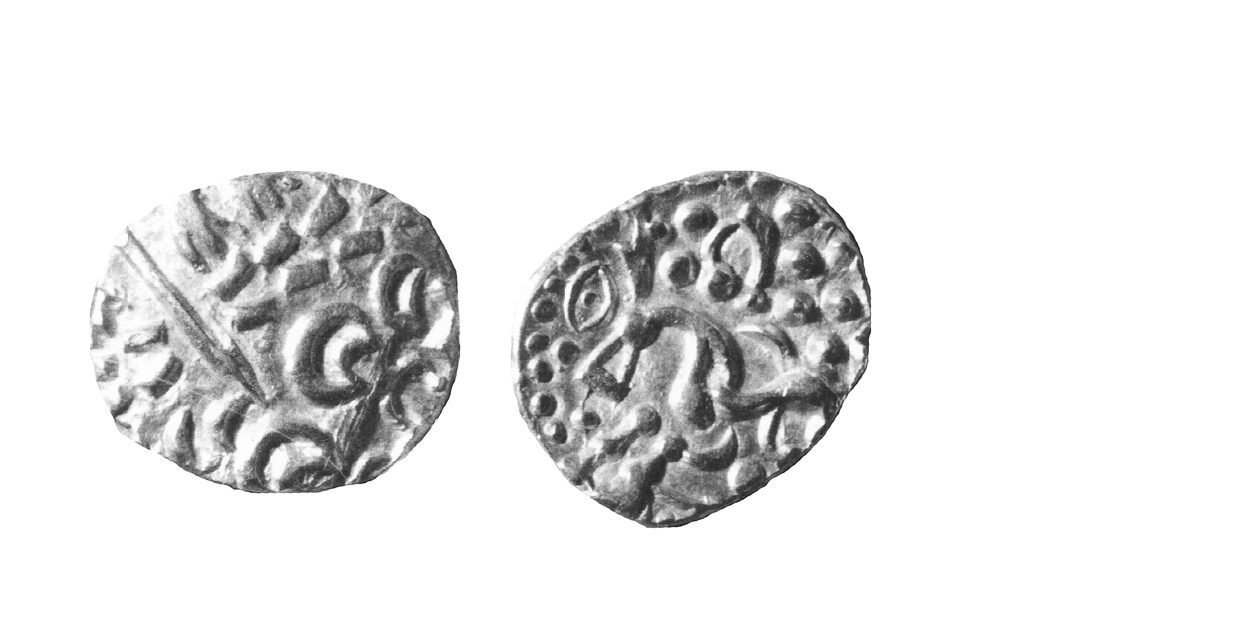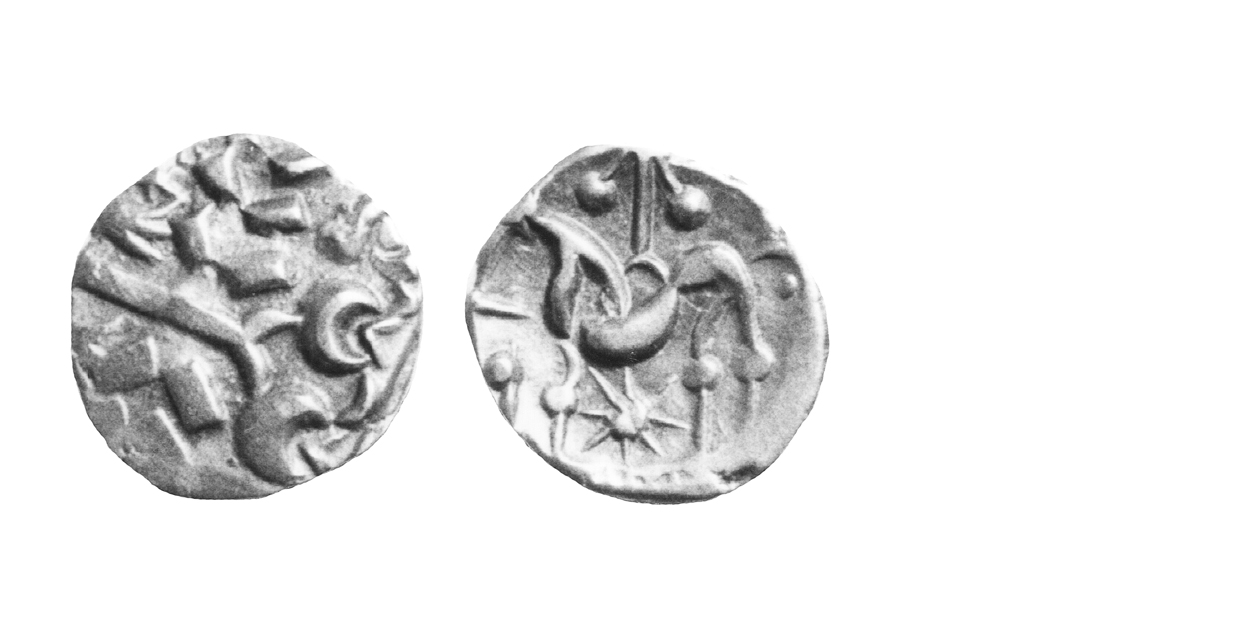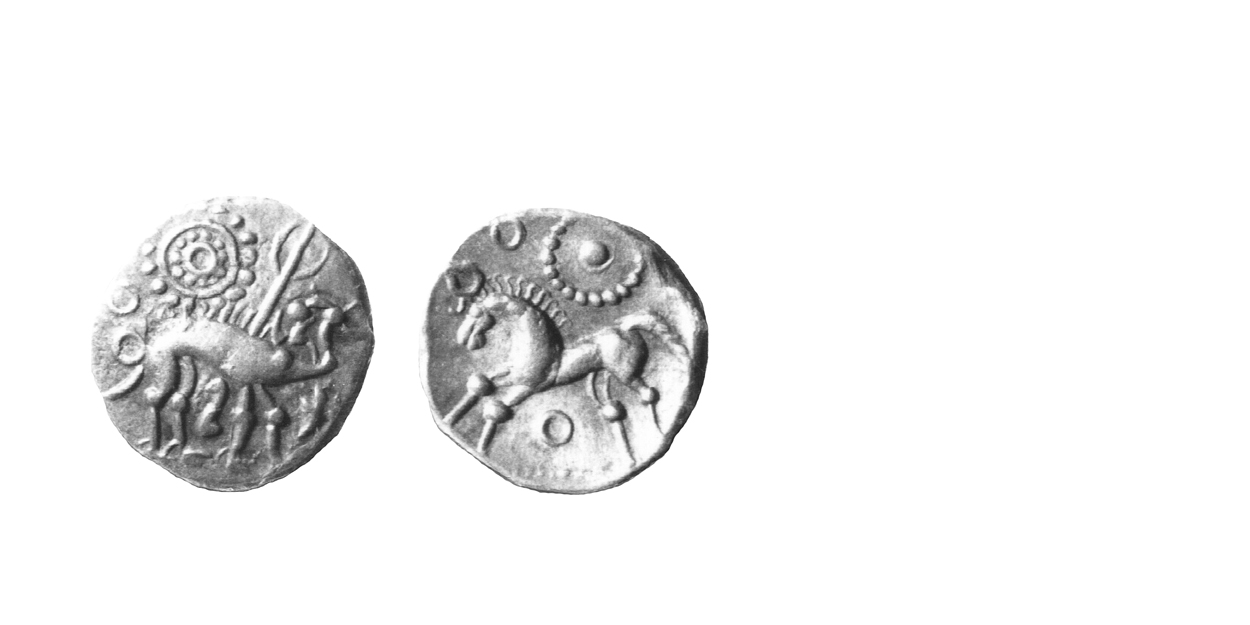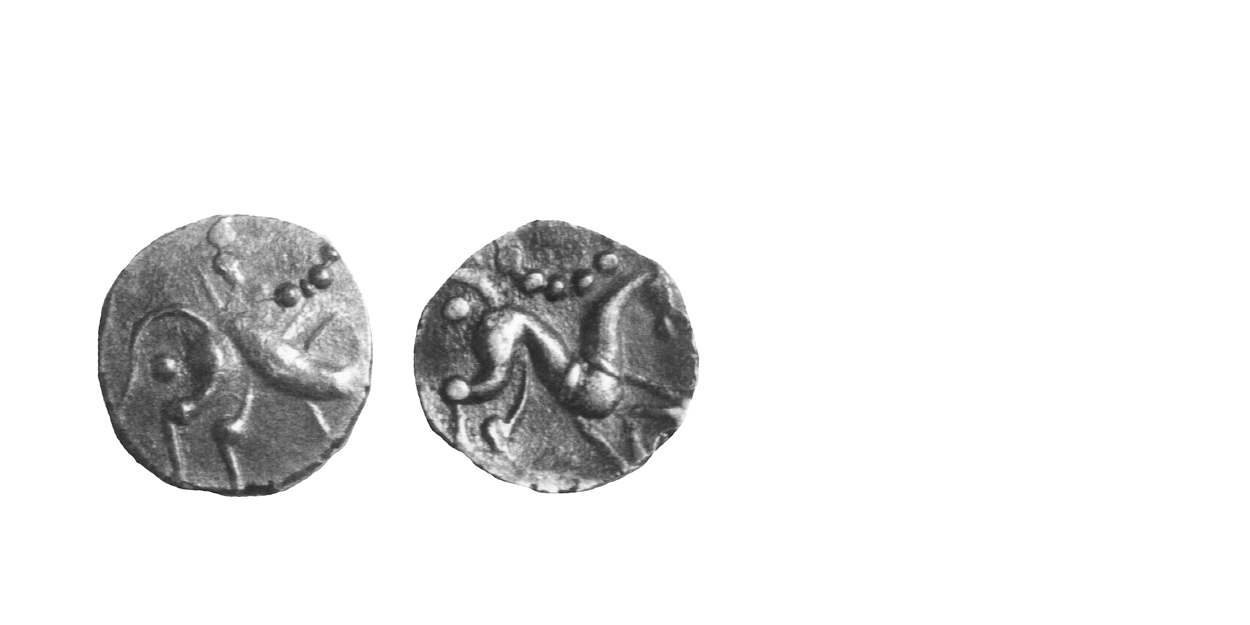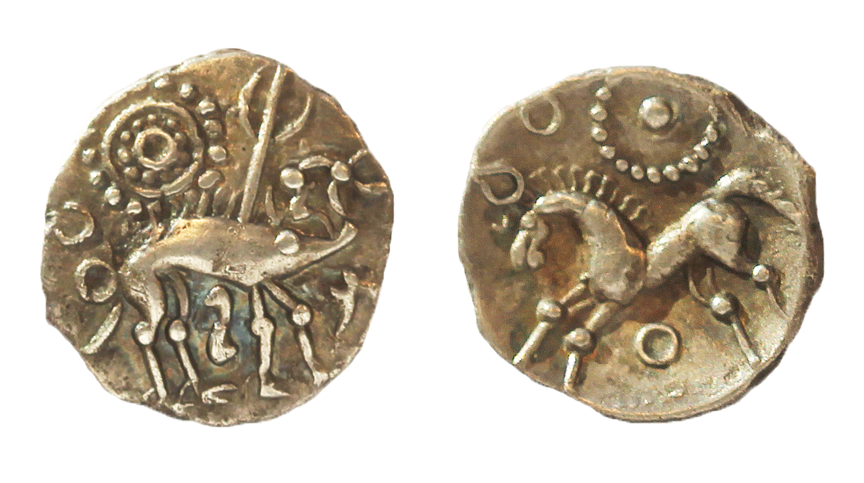
History
Last Uninscribed Coinages (Info)
Coinage in the Region of the Peripheral Tribes 54 B.C. – 20 A.D.
The peripheral tribes, the Durotriges, Dobunni, and Corieltauvi all seemed to follow their own paths during the second half of the First Century B.C.
The Durotriges, by the end of the war, had run out of gold and struck only silver coins. Although modest trade continued with the Armorican peninsula, the Armorican tribes were not in a position to add to the wealth of the Durotriges. Furthermore, fewer findspots of postwar Durotrigan coins appear in Dobunnic or Atrebatic/Regnan territory, indicating the tribe had less economic interaction with the rest of southern Britain. This isolation caused the tribe to suffer economically (59).
The Durotrigan coinage underwent a decline in silver standard over the next twenty years. As the coins became successively debased, minor changes were made to the designs (60). Sometime, probably late in this sequence, a new type silver coin was introduced, the Starfish Type. There is some evidence this was struck in two denominations, but the issue was short-lived. By 30 B.C., the Durotriges were forced to debase their coinage further, until it became merely an issue of bronze staters. These were struck into the next the century.
The Dobunni were the last tribe in Britain to strike their own coins and numismatically represented a backwater. They formed part of the Atrebatic/Regnan/Belgic trading network during the war, and were introduced to coinage primarily by imports of Atrebatic Abstract Type staters. After the war, this trading network became less important and the Dobunni gradually received fewer coins from the Atrebates/Regni/Belgae. They then introduced their own staters, around 35 B.C., adapted from the Atrebatic/Regnan/Belgic issues. These carried a branched emblem on the obverse, instead of the abstract head of Apollo. The Emblem Type stater, and its quarter, the Dobunnic Abstract Type were issued only in small quantities and it is possible the tribe stopped striking gold coins for a few years.
A silver Dobunnic coinage was begun about the same time. These coins were commoner and were struck in a fairly complex progression of types. Conceivably, the Dobunni used silver coins exclusively for a time, following Durotrigan practice. Durotrigan coins appeared in Dobunnic territory less at this date, however, so trading patterns do not fully explain a change in standard. Perhaps the Dobunni simply lacked the gold bullion with which to strike coins.
Later, around 30 B.C., a series of inscribed issues was struck in gold, the first with the name CORIO (61).
The Corieltauvi were still striking the North East Coast Type staters after the war. They had held out too long and again found themselves striking coins which were heavier than those of their neighbours. The next reduction in weight was signaled by a radical departure in the coins' artistic style. An amazingly complex and sophisticated coinage was issued starting about 45 B.C. These coins, known collectively in the past as the South Ferriby Type, comprised perhaps the most elaborate of all Ancient British coinages. A bewildering sequence of privy marks appeared as the coins were struck over the next thirty-five years.
The silver Corieltauvian coinage had begun about 55 B.C., and the boar on the reverse of the first issue, the Hosidius Type, was adapted from a Roman denarius (62). The Hosidius Type was later replaced by the silver South Ferriby Type at the time the gold coinage was changed.
The first dynastic issues of the Corieltauvi began fairly late, around 10 BC., and replaced the last of the South Ferriby varieties.
Next Section – Early Dynastic Coinages

